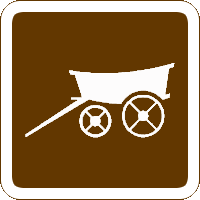Follow the brown signs




Agricultural Museum
“Agriculture is, beyond all doubt, the foundation of every other art, business and profession, and it has therefore been the ideal policy of every wise and prudent people to encourage it to the utmost” Arthur Young (1741-1820)
A little bit of history
The change in British farming since the agricultural revolution of the mid 1700s has been phenomenal. Significant scientific and technological advances, like the introduction of steam power, shifted the typical countryside scene from horses drawing ploughs and all-hands-on-deck at harvest time to the sight and sound of machines doing the work of the farm labourers. Today, leaps and bounds later, we can eat pretty much any food we like, all produced on a massive scale even out of season and flown in from every corner of the planet. Our insatiable appetite has fuelled the need for ever bigger farms, forced production and use of chemicals on a global scale that would be absolutely unimaginable only 50 years ago.
Agricultural and rural life museums first began being set up after WWII when out-dated farm equipment was lying around unused and in danger of being lost forever. In one village the proposed answer to the problem of redundant wagons was to pile them all onto a gigantic bonfire in celebration of the Queens Jubilee! Lucky for us then that a few dedicated individuals had set to work collecting and preserving these important reminders of bygone farming days, they realised that the important connection between people and land needed to be kept alive in the ever widening gap caused by machine production and supermarket shopping. There are now around 50 agricultural museums across the UK.
What the experts say
“In a world dominated by urban forms, museums of agriculture and of rural life provide an invaluable service. They bring new vitality to the history of the countryside and render unfamiliar narratives accessible to a wider audience. Inspiring activities help to reveal where food comes from. Exhibitions seek to reconnect people with green spaces and raise the profile of traditional crafts. Programmes of research and collecting chart our ongoing relationship with the land that surrounds our towns and cities. These important sites look to the future and raise important questions about sustainability, the environment, and the value of our rural heritage.” Ollie Douglas, Assistant Curator at The Museum of English Rural Life, Reading.
Organisations, official bodies and great links to places where you can find out more
www.ruralmuseums.specialistnetwork.org.uk – Specialist website for agricultural museums with full list of affiliated museums and parties
www.bahs.org.uk – The British Agricultural History Society
www.rase.org.uk – The Royal Agricultural Society of England
A brown-signer’s guide:
I love agricultural museums, can’t get enough of them, the main reason being that they appeal to a very base “hands on” approach to life that I like a lot. I’m really suspicious of things I don’t understand and I don’t like things I couldn’t do myself, with my own two hands if I needed to. So modern day high yield farming techniques and agri-businesses scare me. I don’t like the fact that we’ve grown reliant on an ever decreasing number of bigger and bigger farms to provide our food and a few massive supermarket chains to sell it to us. I just think it’s so important that we keep the knowledge of rural, time honoured techniques and crafts alive which got us through in the days before huge greenhouses and machinery took over. What would we all do if these big farms couldn’t provide our food any more? How would we all cope? It’s something that’s just so easy to take for granted and it worries me that we just wouldn’t have the skills to even feed ourselves if something bad like disease on a large scale happened. It’ll come as no surprise then that I champion vegetable patches and baskets made from willow, and where’s the place to get all that? At an agricultural museum that’s where. The events these museums run are nearly always inspiring interactive affairs, providing the vital link between land and table that is so at risk of being lost in the current way our food is grown and how we do our shopping. My advice to you? Visit an agricultural museum, you’ll definitely start growing potatoes (or at least some tomatoes) afterwards and you’ll feel that sense of triumph and satisfaction that only comes when you serve up your own crop and know you didn’t rely on anyone for it.
Agricultural Museums across Britain
[geo_mashup_map map_cat=”4″ height=”600″ width=”600″ zoom=”6″ add_overview_control=”false” add_map_type_control=”false” auto_info_open=”false” centre_lat=”54″ centre_lng=”4″]





